
The Ultimate Guide to Reykjavik
Reykjavík, Iceland’s capital, entices visitors with its vibrant nightlife, world-class cuisine, and immediate access to breathtaking natural landscapes. Trendy shops, cosy cafés, and a laid-back vibe make this compact city both welcoming and effortlessly cool. Ready to discover all that Reykjavík has to offer?
Why Visit Reykjavík?
Reykjavík captivates visitors with its striking architectural landmarks, with its skyline featuring striking sights like Hallgrímskirkja, the modern Harpa Opera House, and a quaint old town where colourful houses line the harbour. In addition to its urban allure, the city offers a vibrant cultural pulse—think street art, local galleries, bustling coffee shops, and an energetic music scene—ensuring that day or night, there’s always something to explore.
Beyond its lively streets, Reykjavík is a perfect gateway to Iceland’s natural marvels, from the renowned Golden Circle to the geothermal wonders of the Sky Lagoon. Whether you’re seeking Northern Lights and ice skating on Tjörnin in winter or whale-watching and puffin-spotting during the endless summer days, Reykjavík truly stands out as a year-round destination where adventure, relaxation, and cultural discovery converge.
When to Visit Reykjavík?
Reykjavík is truly a year-round destination, with each season bringing its own unique blend of weather, festivities, and activities. To help you choose the ideal time, we’ve outlined the city’s highlights below—whether you crave crisp winter nights or the endless daylight of the Icelandic summer. For an in-depth look at overall weather patterns and annual events, be sure to check our comprehensive guide on the best time to visit Reykjavík.
In winter, Reykjavík transforms into a cosy wonderland perfect for spotting the Northern Lights, enjoying holiday magic around Christmas, or watching spectacular fireworks on New Year’s Eve. If you’re planning a seasonal trip, don’t miss our detailed posts on things to do in Reykjavik in winter, Christmas in Reykjavik, and Reykjavik New Years for insider tips on the city’s frosty charms.
Summer days usher in whale-watching adventures, puffin-spotting excursions, and nearly endless daylight, perfect for exploring on foot. For more ways to make the most of warmer weather, head to our dedicated page on things to do in Reykjavik in summer.
If you are planning a trip to Reykjavík in August 2026, it will be a prime location for experiencing the Solar Eclipse 2026 in Iceland.
You can also plan month by month using our guides:
- Spring (March, April and May): Shoulder season perks, fewer crowds, and the possibility of catching late auroras.
- Summer (June, July and August): Midnight sun, puffin sightings, whale-watching, and outdoor festivals.
- Autumn (September, October and November): Beautiful fall colours, harvest festivals, and a chance to spot the Northern Lights early in the season.
- Winter (December, January, February): Northern Lights, ice skating on Tjörnin, Christmas markets, and cosy café culture.
Whether you visit in mid-winter or the heart of summer, Reykjavík’s charm shines all year.
A bit of background history
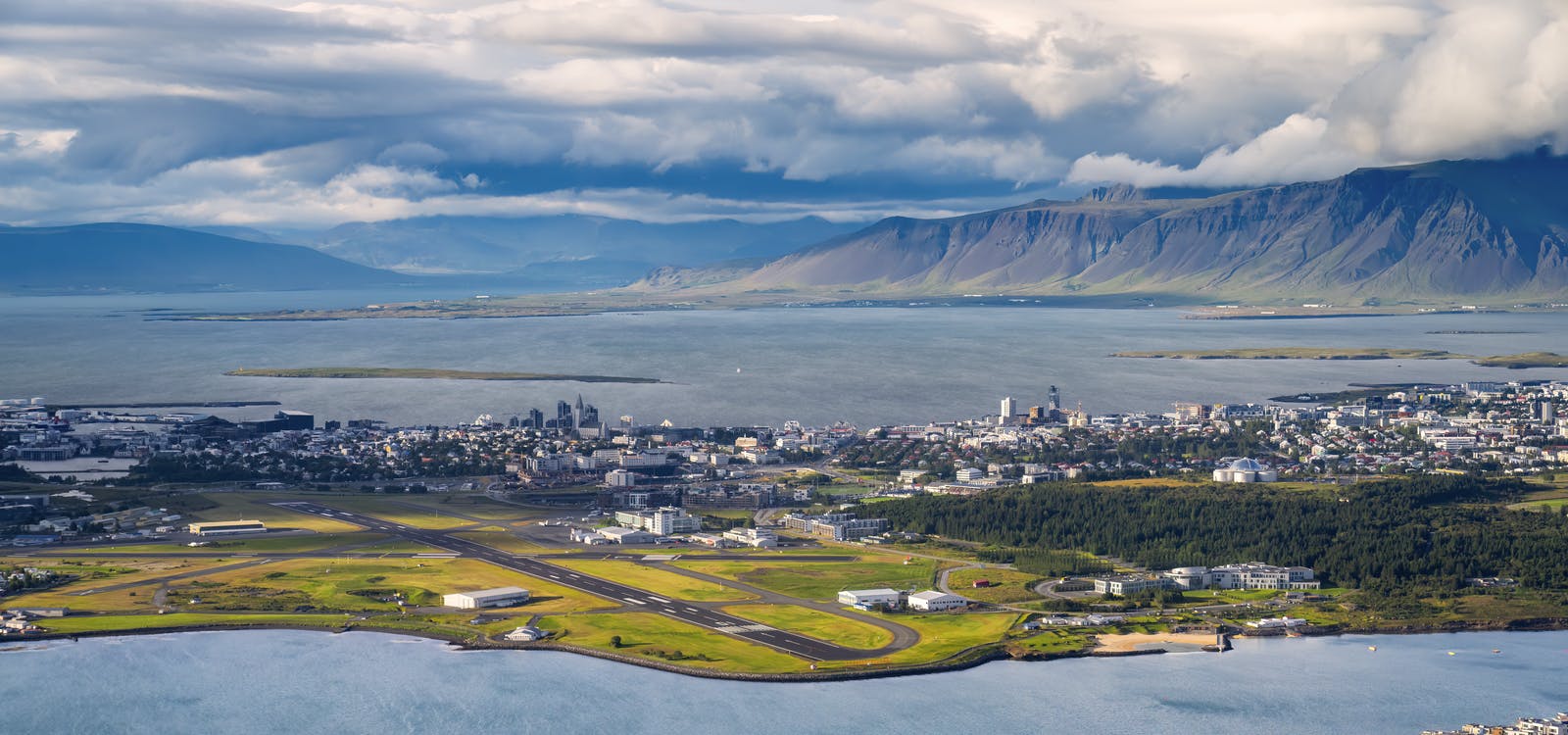
Located in the south west of Iceland, Reykjavik is the world’s most northerly capital city. (Technically Nuuk in Greenland sits at a higher latitude but isn’t the capital of a sovereign state.) With a population of barely 130,000 Reykjavik is tiny in comparison to many of Europe’s capitals, yet it punches well above its weight when it comes to things to see and do.
Reykjavik was founded in 874 by a Norseman called Ingólfur Arnarson. The name means “smoky bay” which most likely is a reference to volcanic activity in the wider area. Almost throughout its history, the settlement remained quite small. It started to feel more like a capital city when the Althing was disbanded in 1800 and parliament moved to Reykjavik from Thingvellir. Things really began to change in the 20th century when Reykjavik’s position was consolidated further when Iceland gained its independence from Denmark in 1944. Hosting an important US-Russian summit between Ronald Reagan and Mikhail Gorbachev in 1986 further cemented its status on the world stage.
Things to do in Reykjavik
Indoors and out, there’s no shortage of things to do in the Icelandic capital no matter what time of year you plan to visit.
Things to do in winter
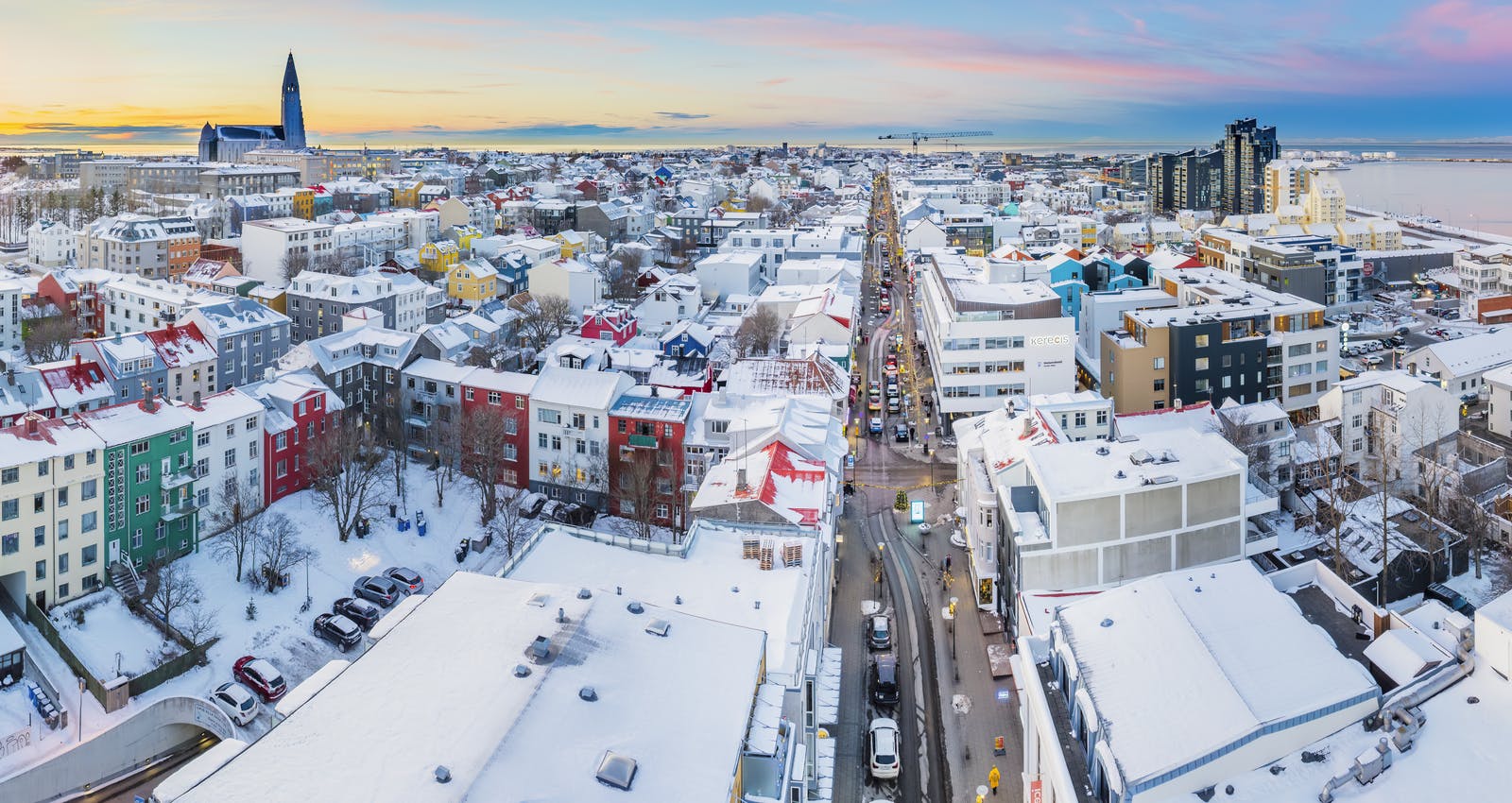
In winter, colder weather and fewer hours of daylight means that attention turns to indoor attractions. That gives Reykjavik’s many museums a chance to shine. It should come as no surprise to learn that Iceland’s relationship with the ocean is explored at length, for instance in the Reykjavik Maritime Museum down by the harbour, the country’s fishing industry and seafaring heritage makes a fascinating subject. Close by, inside Whales of Iceland you’ll find exhibits covering 23 different species of cetacean found in Icelandic waters.
Iceland’s cultural heritage is also a popular topic. The Settlement Exhibit preserves what remains of city’s 10th century inhabitants, while the Saga Museum tells some of the most important stories from those Viking days. It’s worth travelling just outside the city to the excellent Árbær Open Air Museum as this is where you’ll find a significant collection of historic buildings on what was originally a farm, including a chance to see those quirky turf roofs at close quarters.
Choose below for detailed monthly guides for the winter:
Christmas and New Year
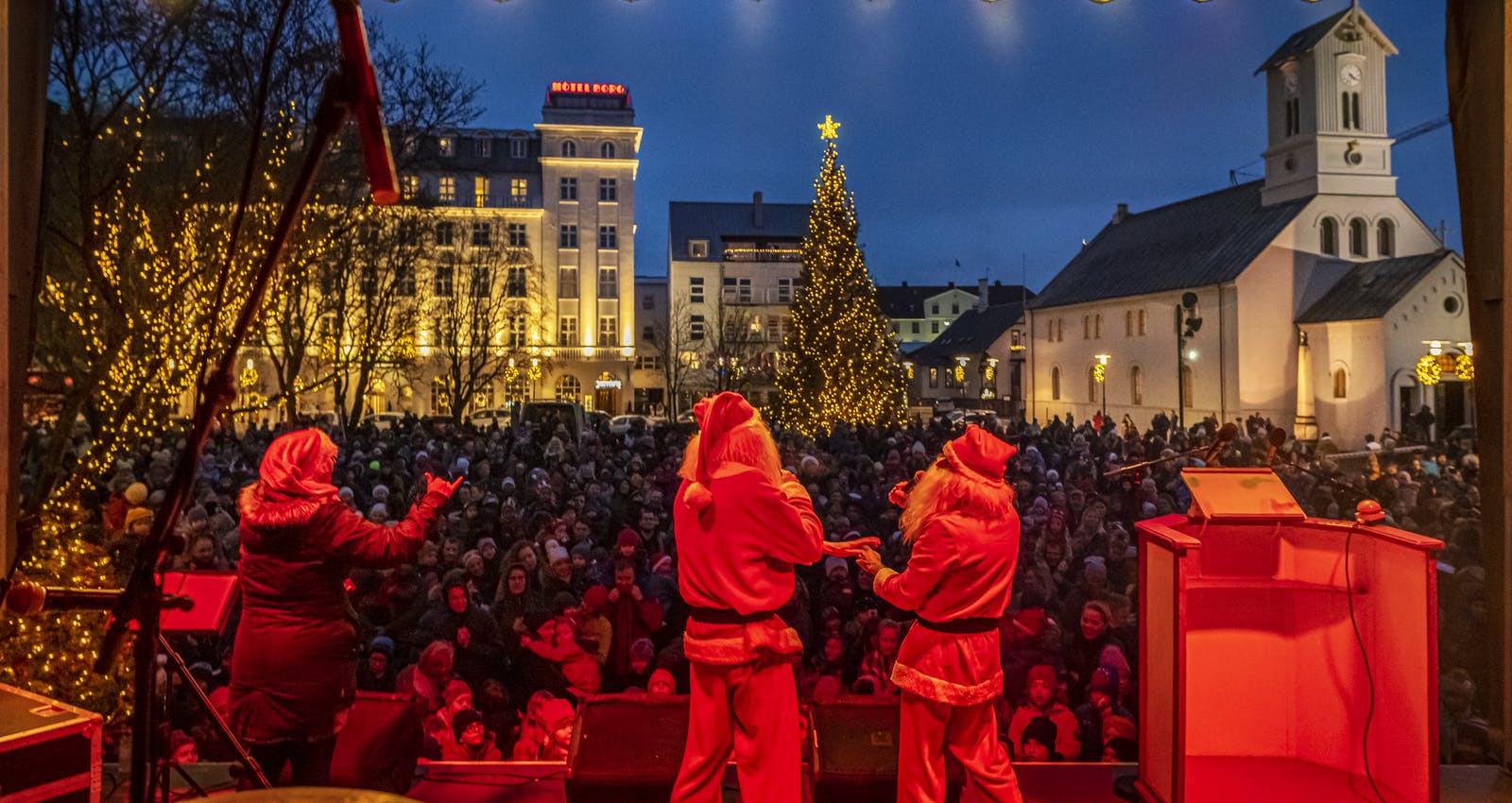
One particular part of winter stands out as truly magical: the Christmas and New Year season in Iceland, especially in Reykjavík. The city comes alive with festive cheer, offering a variety of special events that make this time of year unforgettable. Stroll through streets adorned with twinkling Christmas lights, explore shops brimming with artisan-made gifts, and immerse yourself in Icelandic Christmas food traditions, a delightful way to experience the local culture. If temperatures drop low enough, Tjörnin pond transforms into a natural ice rink where skaters glide gracefully across the frozen surface, adding to the winter wonderland ambiance.
New Year’s in Reykjavík is equally spectacular, with celebrations that bring a lively party atmosphere to the city. Fireworks light up the sky as residents and visitors alike gather to welcome the new year with excitement. For a deeper dive into the city’s festive offerings, discover more about Christmas in Reykjavík, where traditions blend with modern celebrations to create an unforgettable holiday experience.
Things to do in summer
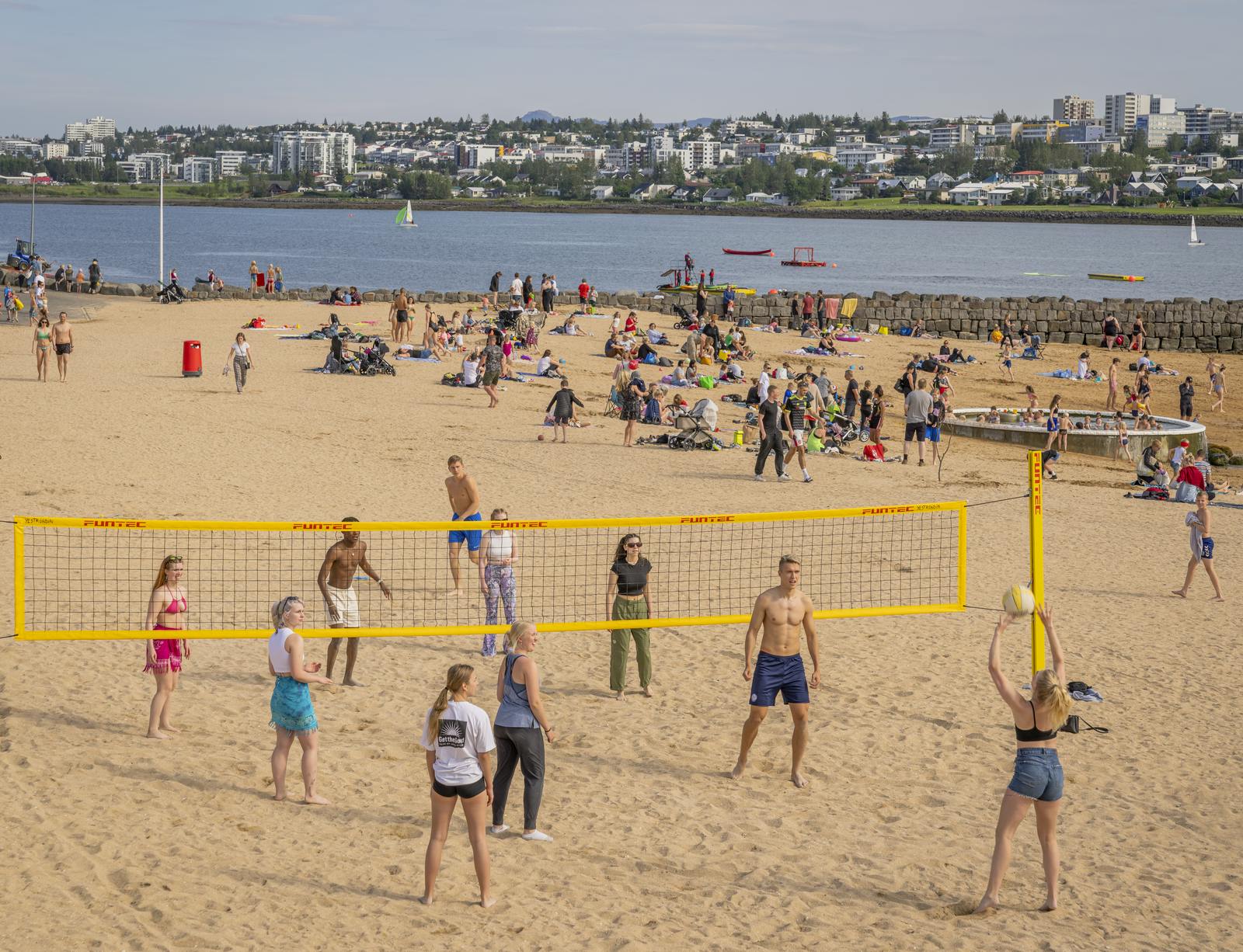
Of course, all these places are open year-round, but in summer, the warmer weather opens up yet more possibilities. Fewer storms make this a better time to head out into Faxaflói Bay on a whale watching trip. Though it’s possible to see cetaceans at any time of year, boats can’t always put to sea if conditions are windy and flat calm seas mean your full attention can be fixed on spotting these majestic creatures. Summer’s also a great time to spot puffins. These comical seabirds will delight you with their clumsy antics.
Iceland might feel like an odd place to plan a trip to the beach. But even though the country doesn’t have the hot weather you might encounter further south in Europe, it has a secret weapon: geothermal energy. At Nauthólsvík Geothermal Beach, this warm water is pumped into a manmade lagoon. Add some golden sand and, hey presto, you’ve got yourself an Icelandic beach resort.
Choose below for detailed monthly guides for the summer:
Close by
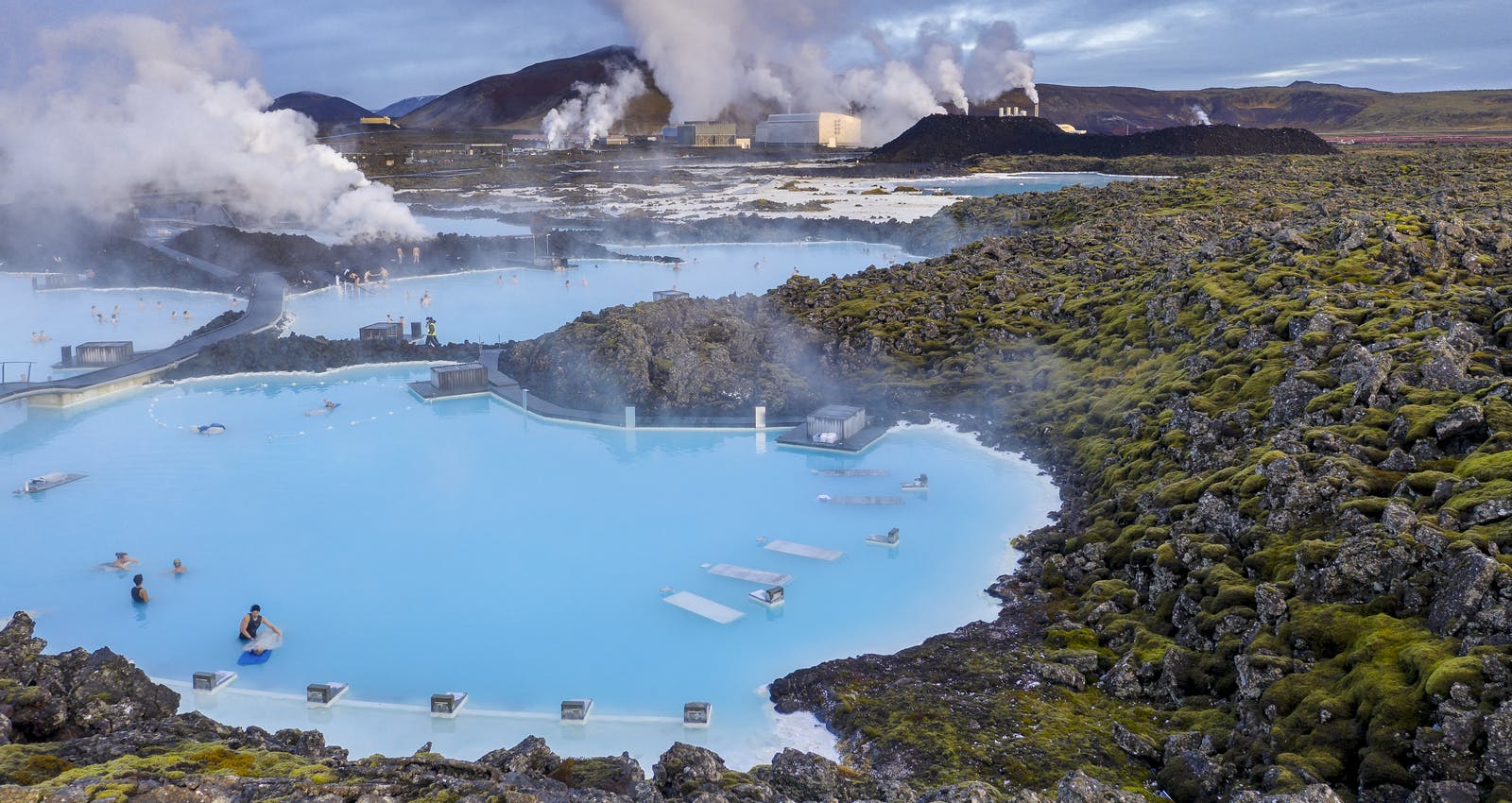
If you prefer a luxury spa experience, then Sky Lagoon’s barely a 15 minute drive away from downtown. In nearby Reykjanes, thanks to its convenient location between Reykjavik and the airport, the Blue Lagoon’s similarly easy to tick off your bucket list if you have a morning or afternoon to spare. Both are immensely popular in summer, but because of the warmth of the water they’re a pleasant experience no matter when you call in. Even on the most hurried stopover, you should make time for at least one of these, and a day out to the Golden Circle too if you can squeeze it in.
Perlan
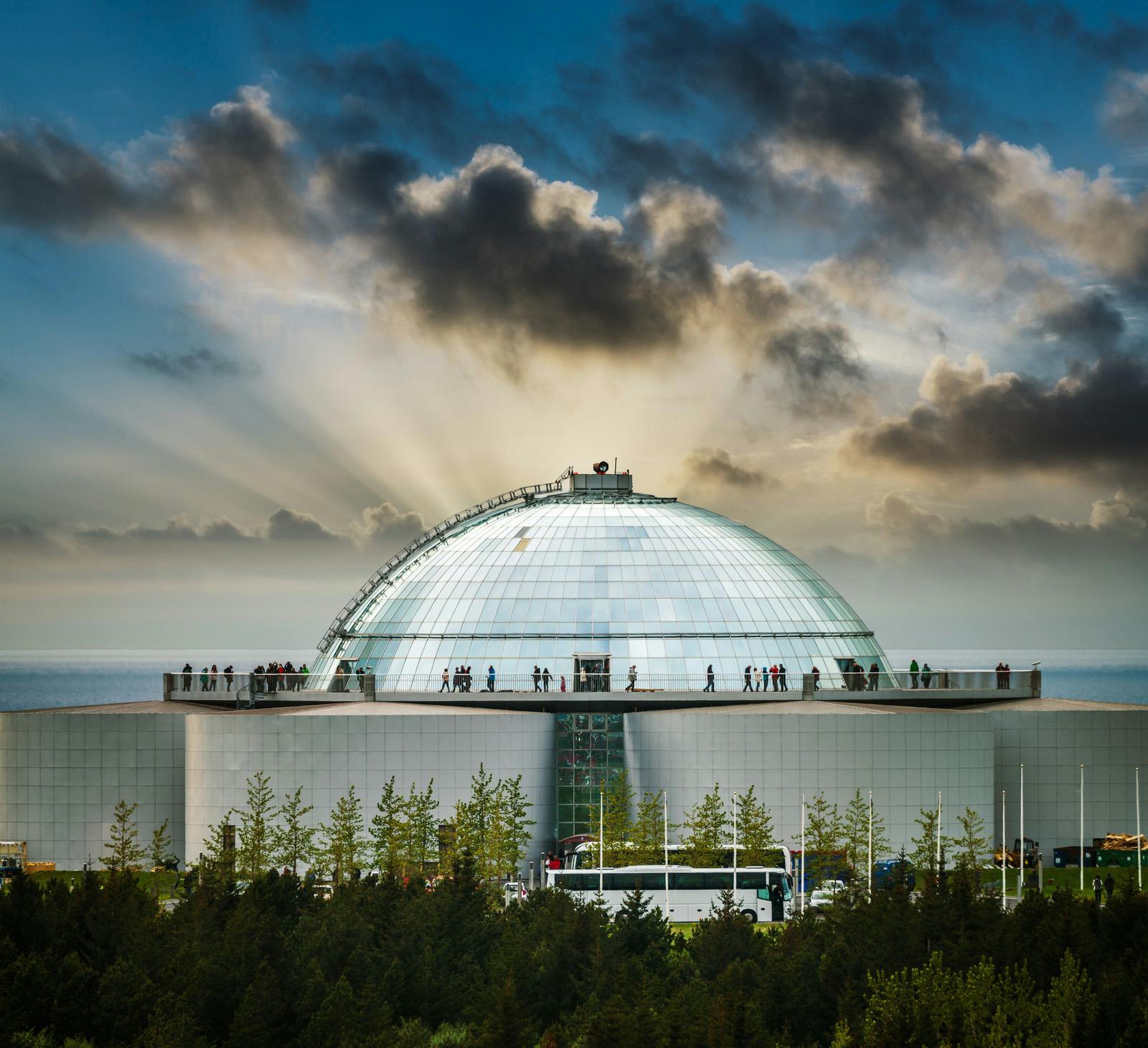
If winter conditions have put you off driving, then you can make a virtual visit to many of the country’s most impressive natural environments at Perlan – without even leaving Reykjavik. In the capital city of the Land of Fire and Ice, you don’t have to travel far from downtown to experience both. It’s home to exhibits about glaciers – with its own ice cave made from real snow – and volcanoes.
Perlan’s also where you’ll find the Áróra show, a fabulous alternative to seeing the Northern Lights outside if the clouds stubbornly refuse to lift during your visit. If you do get clear skies, one of the darkest places closest to the city centre is out at Grótta, whose lighthouse is a short bus ride away yet perfectly placed to witness the dazzling display put on by the Aurora Borealis when it makes an appearance.
The best views in Reykjavik
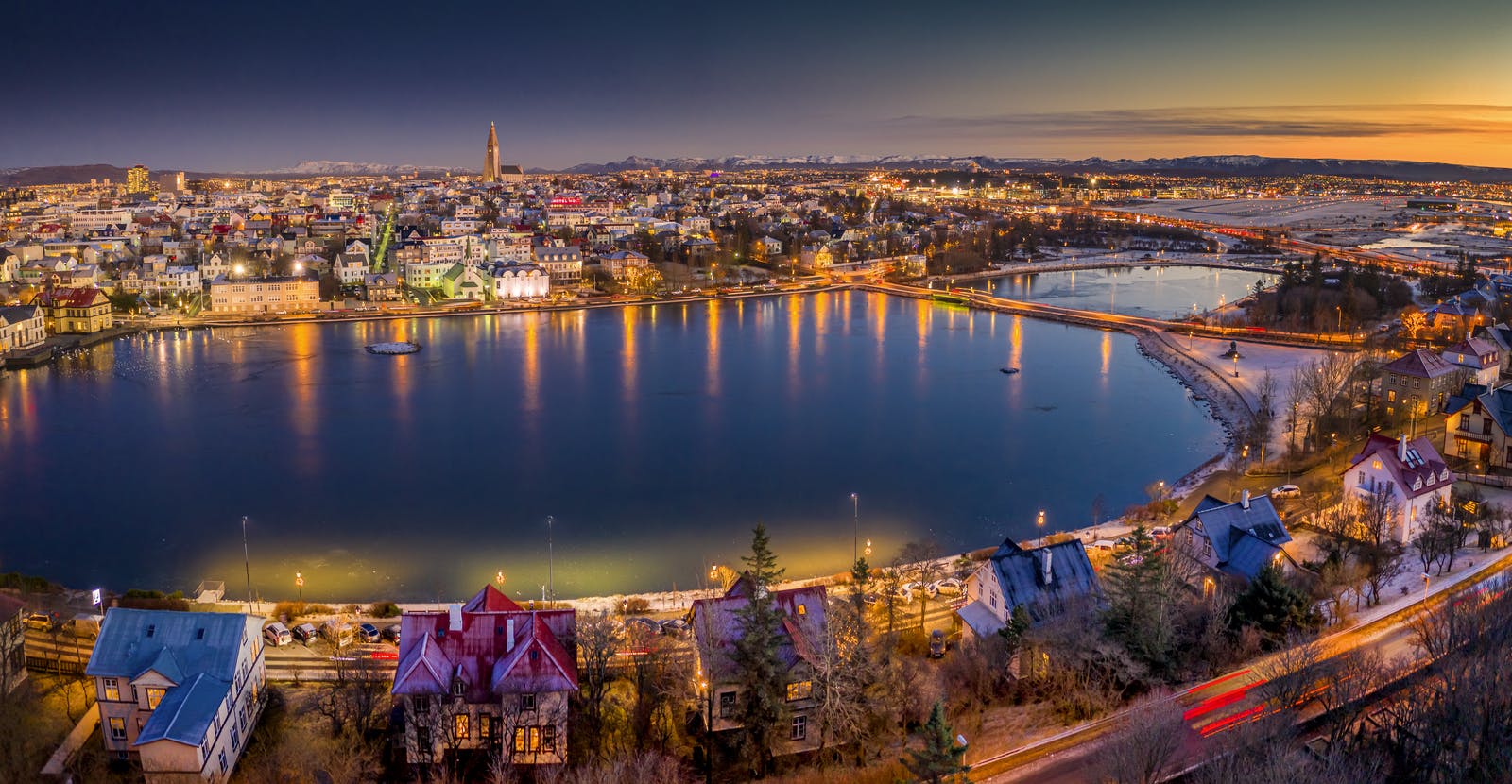
While the views from the Old Harbour – or anywhere along the waterfront for that matter – take a lot of beating, riding the elevator up to the top of Hallgrímskirkja is a must. It’s the best way to experience this landmark church known for its magnificent architecture and this lofty vantage point is a handy place to come to get your bearings and plan your next move.
See the best places for views of Reykjavik City.
Perlan also has a wraparound observation deck offering breathtaking views across the city. The building’s location on top of Öskjuhlíð hill provides that all important extra height and makes it possible to see right over Reykjavik’s rooftops to the oceans and mountains beyond. You can dine here too, absorbing that breathtaking 360° panorama in between courses.
Popular tours
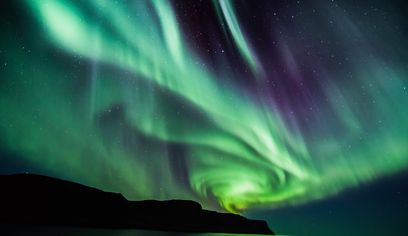
The #1 Northern Lights Tour in Iceland | FREE photos, Homemade Hot Chocolate & cinnamon buns

Reykjavík Northern Lights Cruise

Aurora Basecamp Night pass

Reykjavík Whales & Northern Lights

Northern Lights Tour from Reykjavik, With Photographs, Local Pastrys and Hot Chocolate

DT 310 Private Superjeep Northern Lights

NORTHERN LIGHTS AND STARGAZING (Guided in 10 languages)

GOLDEN CIRCLE AND NORTHERN LIGHTS (Guided in 10 languages)

Aurora Viking - The Private Tour - Northern Lights Tour

Northern Lights w/Aurora Viking - free pro photos - Free Retry – minibus
